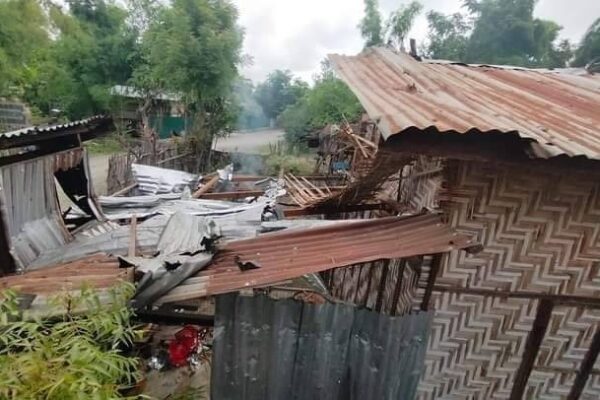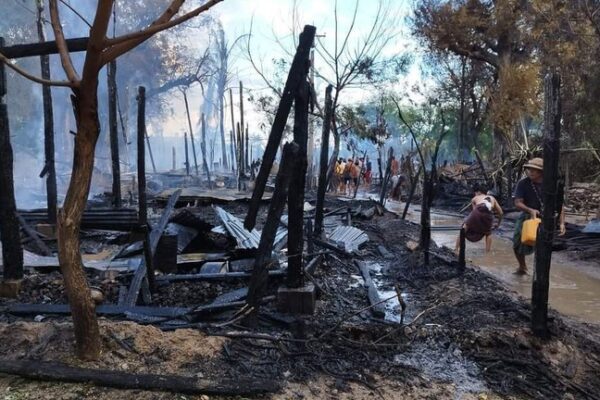Destructive blasts in towns across Myanmar, but no one claims responsibility
Myanmar is experiencing a rising number of explosions in cities and towns across the country, but no group is claiming responsibility. This month, the blasts, which appear to be mostly homemade bombs, have injured more than 20 civilians and killed one.data compiled by Radio Free Asia shows. They have gone off in Yangon, Mandalay, in the northern Sagaing region as well as in Shan state. They come amid intensifying fighting between the junta, which took over the country in a 2021 coup, and armed rebel groups. On July 15, a homemade bomb exploded in front of the Zwe Htet jewelry store in Lashio, Shan state killing a man in his twenties and injuring at least 10 others. The survivors were treated as emergency patients at Lashio General Hospital, residents told RFA’s Burmese Service. “No one can say whether it was done by the junta, the PDF, or an armed organization,” said a Lashio resident on condition of anonymity. PDFs, or public defense forces, are small citizen militias that emerged after the military took over the country in a coup in February 2021. “What I want to say as a citizen is that we don’t want this to happen again. Bombs exploded in front of a hotel and a jewelry store in Lashio where people were passing. We don’t want things like that,” the resident said. The city of Lashio is a hotbed of covert activities for both local armed groups and junta troops, and bomb explosions have become more frequent after the military coup, he said. One day after the Lashio blast, eight people, including a monk, were injured when a bomb exploded in Shwebo Myoma market in the Sagaing region. It is reported that a seriously injured woman in her twenties has been sent to Mandalay General Hospital. Residents blamed this particular blast ons junta troops stationed at U Aung Zeya Palace, west of Shwebo market. But the military council’s propaganda channels have accused the PDFs of attacking the area with drones. ‘Scared to go out’ A Shwebo resident told RFA that there were no such incidents before the military took over and people now are no longer safe. “It’s not easy to make a living here,” the Shwebo resident said. “Although livelihood is difficult, we dare not go to work safely. I am too scared to go out as there is no sense of security for us.” A Shwebo PDF official said that the organization does not harm the public. “The main reason why we are rebelling is because we cannot accept dictatorial rule,” he said. “We want to gain independence and a true federal democracy for the people. We are fighting because we love the people, and we only focus on the interests of the people.” RFA called the junta’s spokesperson Maj. Gen. Zaw Min Tun for comment on the explosions but his phone rang unanswered. Armed organizations should avoid injuring civilians who are not military targets, said Ye Tun, a political analyst. “Civilians who are not military targets cannot avoid this kind of accidental injury,” he said. “Such things often happen. However, deliberate targeting of these innocent civilians is a war crime. I think both sides of the revolution should abstain from doing so.” Harming innocent civilians is a war crime, no matter which side is responsible, said Kyaw Win, director of Burma Human Rights Network. “If the tension has reached the level of an armed revolution, it can be said that this is the worst situation in a country, ” he said. Translated by Myo Min Aung. Edited by Eugene Whong and Malcolm Foster.






